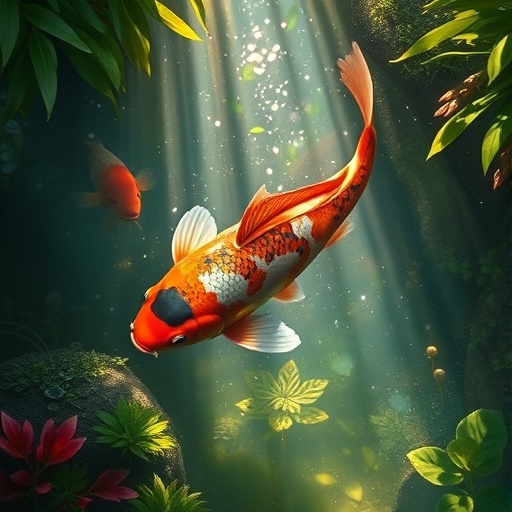Koi fish, one of the most beloved ornamental fish species, are known for their vibrant colors, graceful movements, and serene presence in ponds. Originating from East Asia, particularly Japan, the koi fish has become a global symbol of beauty, wealth, and perseverance. As their popularity has grown, so has their population, both in their natural habitats and in controlled environments like ponds and water gardens worldwide. The population of koi fish has been a topic of interest, particularly as they have become increasingly sought after for their aesthetic appeal and cultural significance.
Historical and Cultural Context
Koi fish, scientifically known as Cyprinus carpio, have a rich cultural history, especially in Japan where they have been cultivated for centuries. The practice of koi breeding began in the 19th century, and over time, different varieties of koi were developed, each with unique colors and patterns. This selective breeding has played a significant role in the increase in koi populations, particularly among enthusiasts and collectors.
Initially, koi were bred for food, but over time, they became a symbol of status and prosperity. Today, koi are primarily kept for ornamental purposes, often in ponds, gardens, and water features. They are also symbols of strength and perseverance due to their ability to swim against currents, a trait that is celebrated in Japanese culture during the annual “Children’s Day” festival. As a result, koi fish are highly valued, which has contributed to their growing population in both private and public settings.
The Global Population Growth of Koi Fish
The population of koi fish has seen a significant increase in recent decades, particularly due to their popularity as ornamental pets. They are now found in gardens, parks, and aquariums across the globe. As the koi fish industry continues to thrive, the number of koi fish in ponds and tanks worldwide has surged. However, it’s important to distinguish between koi kept in captivity and those in the wild.
Koi fish are typically not found in the wild in large numbers, as they are primarily kept in man-made ponds and water gardens. In their native regions, koi can sometimes be found in rivers or lakes, but they are usually bred and raised in controlled environments. While the koi fish population in the wild remains relatively small, it is the population in aquaculture and private collections that has exploded.
One of the factors driving the increase in koi fish populations is the expanding koi breeding industry. With advancements in breeding techniques, koi farmers are able to produce large numbers of fish each year. These fish are then sold to enthusiasts who keep them in private ponds or public displays. Furthermore, with the rise of online marketplaces and international shipping, koi fish are now being exported to countries around the world, further boosting their population.
Environmental Considerations and Sustainable Practices
As koi fish populations grow, there are concerns about the environmental impact of keeping large numbers of these fish in non-native habitats. Koi fish, while resilient and adaptable, require a well-maintained environment to thrive. Ponds and water gardens must be carefully managed to ensure that the fish have enough space, clean water, and appropriate food sources.
Moreover, koi fish have the potential to become invasive in certain environments if they escape from captivity. In some regions, koi have been reported to reproduce in the wild, potentially threatening local ecosystems. Therefore, it is essential for koi owners and breeders to adhere to responsible practices and ensure that they do not release their fish into natural bodies of water.
Conclusion
The koi fish population has seen impressive growth due to their cultural significance, aesthetic appeal, and the booming ornamental fish industry. While the koi population in the wild remains small, the number of koi in private ponds and water features worldwide has soared. As koi continue to capture the hearts of enthusiasts, it is important to maintain sustainable practices in their breeding and care, ensuring that these beautiful creatures thrive in their environments while minimizing their impact on local ecosystems. The future of koi fish looks bright, with their population continuing to expand globally.
4o mini

